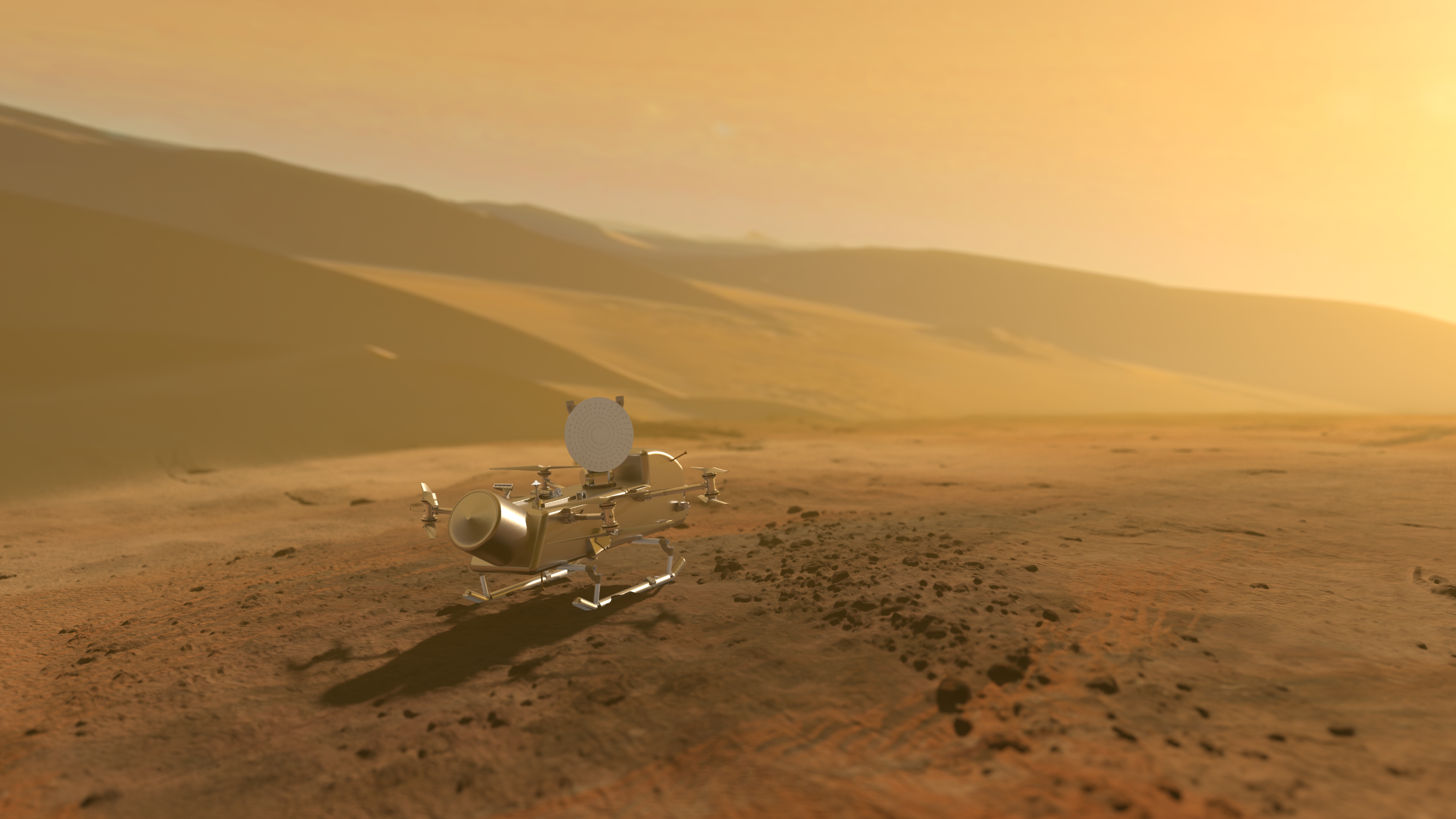5 min read
Cassini Significant Event Report
For Week Ending 04/09/04
The most recent spacecraft telemetry was acquired from the Madrid tracking station on Wednesday, April 7. The Cassini spacecraft is in an excellent state of health and is operating normally.
Information on the present position and speed of the Cassini spacecraft may be found on the "Present Position" web page located at http://saturn.jpl.nasa.gov/operations/present-position.cfm.
C44, the final Approach Science sequence before the start of the tour sequences, began execution this week. At the start of the sequence, instruments performed set-up activities and loaded instrument expanded block files (IEB). Science data collection continued where it left off in C43. Additional activities included execution of an ACS Reaction Wheel Assembly bias and an Imaging Science Subsystem (ISS) photometric calibration.
Planning has begun for a Saturn Orbit Insertion (SOI) Data Evaluation and Ground System test to be performed during C44 in early May. As part of the test all teams will be expected to query the ground system as though it were SOI data being returned. In addition, all teams will be expected to perform any analysis necessary to determine whether or not they received sufficient data.
Preliminary and official port 1 deliveries were made this week as part of Science Operations Plan implementation of the S25/S26 tour sequences. In addition, a preliminary port 1 delivery was made for sequences S27/S28.
Requested discretionary changes were due this week from the instrument teams and Spacecraft Operations office in preparation for the start of the S04 Aftermarket process.
In the last week, 556 ISS images and 11 Visual and Infrared Mapping Spectrometer (VIMS) cubes were returned and distributed, bringing the total of images acquired since the start of Approach Science up to 2561, and the number of cubes up to 674.
The Cassini Program completed the Saturn Orbit Insertion (SOI) Critical Event Readiness Review on April 1. The one day review had board members from within JPL, from other NASA centers, from private industry, and two reviewers from the newly established NASA Engineering and Safety Center. In general, the board agreed that Cassini was well prepared for SOI activities with very positive remarks on the technical preparations. The board identified some areas in contingency preparedness and operational readiness testing where additional work would benefit the project. The SOI team is evaluating these recommendations and will incorporate them into the current work plan.
A Planetary Data System (PDS) peer review was held for Magnetometer Subsystem data at the end of March.
The Integrated Test Laboratory (ITL) was extremely busy this week, running tests for both the ACS A8.6.7 flight software (FSW) uplink and the Phoebe closest approach baseline sequence. The FSW test ran successfully and will execute on board the spacecraft at the end of April. The Phoebe test also executed successfully. However, some instrument testbeds did not receive the expected data. ITL is currently troubleshooting the problem.
The Automated Sequence Processor (ASP) has been released for operational use. ASP allows science team members to send instrument internal real time commands directly to their instrument without the involvement of sequence team personnel. ASP will provide a considerable savings in effort and time required to generate and execute real time commands as the number of such commands increases throughout the Saturn tour.
Delivery coordination meetings were held this week for Mission Sequence Subsystem D10.3 and for Version 1 of the Cassini Archive Tracking Tool. The Cassini Archive Tracking System is a web application tool that tracks required archive submissions into PDS. It allows the project and PDS to accurately and efficiently report on archive submission status. It facilitates communication between teams, the project, and PDS.
The Cassini Outreach Literacy Team presented a series of workshops and talked with teachers at the National Science Teachers' Association (NSTA) annual convention in Atlanta, Georgia. Workshops by the team were attended by roughly 300 teachers from across the nation. Response to "Reading, Writing, and Rings" was excellent. The Cassini Literacy Team is a partnership with the Cassini Mission, the Bay Area Writing Project, Project FIRST (Foundations In Reading Through Science and Technology), and the Caltech Pre-College Science Initiative (CAPSI).
The European Southern Observatory has released an article and new detailed images from the Very Large Telescope from the Paranal Observatory in Chile relating to weather forecasting on Titan. For more information link to: http://www.eso.org/outreach/press-rel/pr-2004/phot-08-04.html
This week's Cassini image of the week is another beautiful, natural color image of Saturn, sporting atmospheric features in the southern hemisphere not seen until now. The image may be found at: http://saturn.jpl.nasa.gov/cgi-bin/gs2.cgi?path=../cassini/multimedia/images/saturn/images/PIA05385.jpg&type=image
Additional information about Cassini-Huygens is online at http://saturn.jpl.nasa.gov.
Cassini will begin orbiting Saturn on July 1, 2004, and release its piggybacked Huygens probe about six months later for descent through the thick atmosphere of the moon Titan. Cassini-Huygens is a cooperative mission of NASA, the European Space Agency and the Italian Space Agency. JPL, a division of the California Institute of Technology in Pasadena, manages the mission for NASA's Office of Space Science, Washington, D.C.
Media Relations Office
Jet Propulsion Laboratory
California Institute of
Technology
National Aeronautics and Space
Administration
Pasadena, Calif. 91109.
Telephone (818) 354-5011







